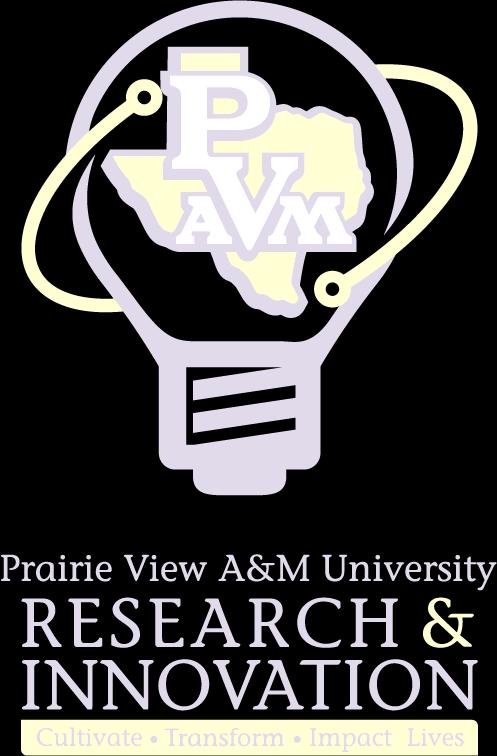
3 minute read
Kristina Littlejohn
from 2021 Research & Innovation Week- Undergraduate Student Research Booklet- Prairie View A&M University
Exploring the Mysteries of the Novel CHEK 1 Gene Kristina Littlejohn and Gloria C. Regisford (Faculty Mentor) Department of Biology, Prairie View A&M University
An emerging field of science, bioinformatics aids in the advancement of medicine and research. As more genomes are sequenced and new genes are discovered, the need for more annotatation and characterization using bioinformatics increases. The purpose of this study was to annotate a novel gene that has been associated with the development of breast and ovarian cancer, the Checkpoint Kinase 1 gene (CHEK1 gene). It is hypothesized that the CHEK1 gene is a protein-coding gene that plays an important role in cell division. To analyze this novel gene, bioinformatics databases, GeneCards, Ensembl and the National Center for Biotechnology (NCBI) were used to explore the mysteries of the CHEK1 gene. In-silico studies found that the CHEK1 gene plays a vital role in the cell cycle arrest response to DNA damage. The CHEK 1 gene is mostly found in the cytoskeleton, nucleus, and cytosol of the cell. It was revealed that this gene is highly expressed in reproductive and secretory tissues, such as breast and ovarian tissues. Further studies showed that chimpanzees and opossums were the most closely related orthologs. Gene CHEK 1 has a total of 73 paralogs, with the MARK 4 gene having the highest similarity score of 77. Mutations of the CHEK 1 gene cause ovarian cancer, retinoblastoma, colorectal cancer, and breast cancer. There are 17 disorders associated with the mutations of this gene, with ovarian cancer having the highest association. The cytogenetic band of CHEK1 gene is 11q24.2, has 51,317 bases and 16 variants and participates in 5 pathways. The in-silico study of the CHEK1 gene is a protein-coding gene that potentially function as a tumor-suppressor and mutation of this gene could lead to the development of two deadly gynecoligcial diseases, breast and ovarian cancer.
Keywords: CHEK1 Gene, Mutations, Cancer, Annotation
41 | Page
Assessing the Impacts of COVID-19 on Historically Underserved Farmers and Ranchers, and their Families Health
1Kyla Peer,
1Noel Estwick (Faculty Mentor), 1Andrea McDonald, 1Nelson T.Daniels, 1Sharon Mcwhinney, 1Jerrel V. Moore, and 2Saundra Glover
1Prairie View A&M University
2Arnold School of Public Health University of South Carolina
A year ago, the Coronavirus pandemic took the United States by storm: mask mandates, quarantines, and closures became the new normal. COVID-19 has also significantly impacted Historically Underserved Farmers and Ranchers (HUFRs). HUFRs help to feed and supply many people around the world through their different production enterprises. The goal of our research is to assess how HUFRs, their families and workers are coping with the COVID-19 pandemic. The objectives are to conduct a survey of HUFRs within the service area of the Prairie View A&M University College of Agriculture and Human Sciences Cooperative Extension Program, formulate a strategy for improving access to COVID-19 resources by farming clientele, determine health concerns of farmers and their families surrounding COVID-19 and, lay the groundwork to apply for funding to develop an 1890 sponsored national disaster resource hub. The study will use a mixed methods Community-Based Participatory Research methodology in a multiple exploratory case study design. Our research team will conduct telephone interviews of agricultural producers in the East Texas, Upper Coast, and Valley Region. We anticipate the results from this pilot study will inform a larger project to produce the following outcomes: 1) Build relationships with the Texas Department of Agriculture and other support groups in Agriculture across Texas; 2) Educate farmers about USDA coronavirus assistance programs; 3) Help extension improve programming related to COVID-19 assistance; 4) Inform the USDA as to the effectiveness of its programs as they relate to HUFRs; and 5) and Develop an information delivery system that targets HUFRs. It is important that we use research to help develop an information delivery system that improves HUFRs access to COVID-19 resources and improve awareness to policymakers regarding health concerns farmers, their families and employees are facing during the pandemic.

Keywords: COVID-19 Programs and Farmers, Farmers and Families, Disasters and Farms
42 | Page







